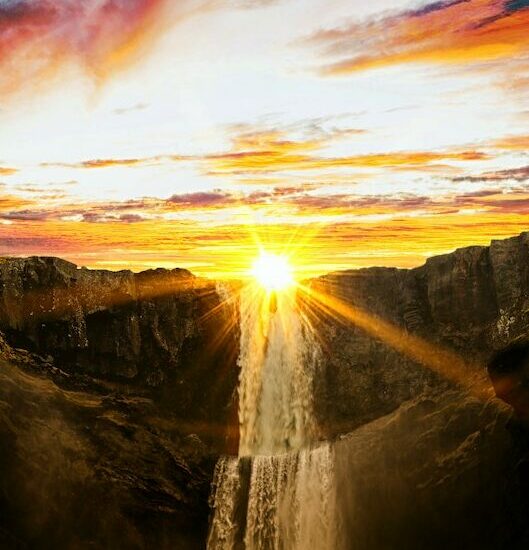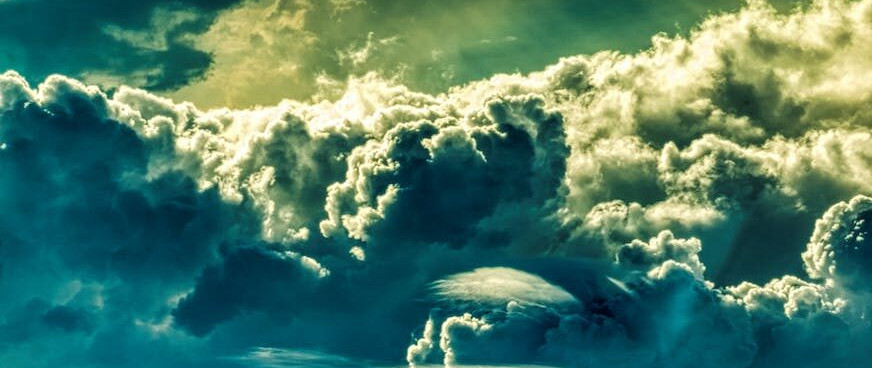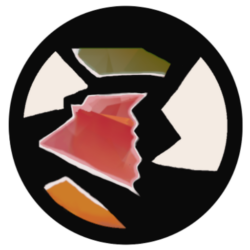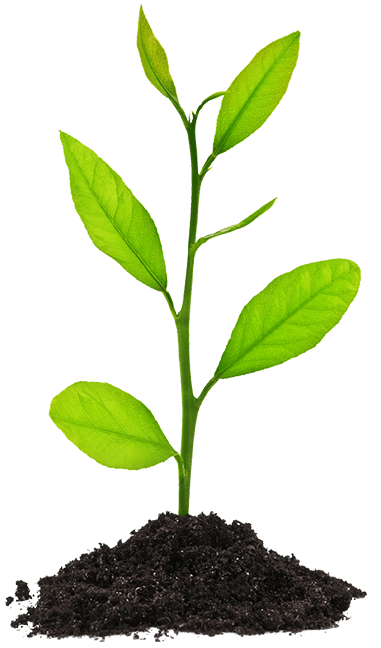
Stratosphere
10 – 50 km in our sky
The stratosphere contains the ozone layer, which is a bit thicker at the North Pole (Arctic Ocean) compared to the South Pole (Antarctica) due to its ozone hole. We refer to ozone in the stratosphere as the ozone layer because the highest concentration of trioxygen is found between 20 and 30 km in our atmosphere, resembling a layer.
Ozone Layer
The ozone layer consists of three atoms of oxygen (O3) that act as a protective shield against the Sun’s UV radiation. Similar to the function of sunscreen for our skin, the ozone layer plays a crucial role in safeguarding all life on Earth. The chemical reaction between oxygen and UV radiation maintains a warm and radiation-safe environment, making it possible for life on our planet.”
What is trioxygen (O3)
Trioxygen is made by oxygen (O2) that is split by UV. The atoms are now loose and connect again by forming O2 or O3. This creates a natural cycle between splitting and connecting. The "ozone-oxygen cycle" transforms UV into heat.
What does UV mean?
Ultraviolet (UV) radiation is made of invisible electromagnetic waves from sunlight. These waves are shorter than the light we can see, but they're longer than x-ray waves. UV radiation can harm genes, causing cancer, or it can be used to sterilize surfaces.
Why do we need to put sun cream during the summer?
During summertime, when the sun is directly overhead, ultraviolet (UV) rays have to travel through a shorter distance of the atmosphere. With less ozone layer to encounter, more UV radiation reaches the Earth's surface, leading to increased exposure and reflection due to fewer interactions with trioxygen along its path. That is why it is necessary to apply sun scream during the summer to protect our skin from intensified UV radiation.
Imagine if Earth didn't have its ozone layer
The Earth’s surface would be bombarded by dangerous UV rays, including the most harmful type called UV-C. These powerful UV rays can harm the genetic material (DNA, RNA), which is like the code that tells organisms how to grow and function. DNA is like the storage unit for this code, and RNA is like the reader that uses the code to build and operate living things. All living things, from animals and plants to the tiniest bacteria, would go extinct. Our entire planet would become lifeless and barren.
ULTRA VIOLET (UV)
Ultraviolet (UV) radiation refers to electromagnetic waves that are invisible to the naked eye. Nanometers (nm) is how we measure the size of the waves and the type of UV (A,B, or C). No amount of UV-C can get through the ozone layer and hit Earth’s surface.
400-780 nm = visible rainbow
270-300 nm = vitamin D
315-400 nm UV-A = (94% hits earth) Gives life
280-315 nm UV-B = (6%) Harms skin
100-280 nm UV-C= (0%) Kills life

292 DOBSON UNITS (DU)
292 DU = 2021 (source NOAA)
300-500 DU = good Ozone layer
0-220 DU = OZONE HOLE

What are Dobson Units?
DU tells us how many O3 are inside the stratosphere. Yet there are a lot of ways scientists look at our stratosphere. DU is just one of many tools. Most satellites and even aircraft help collect data about our stratosphere. DU does not measure the amount of harmful gasses (ODS) in the sky but only the amount of O3 (ozone) inside the atmosphere.
What is the state of our Ozone Layer?
Our ozone layer is slightly thinner than 300 DU (292- DU), allowing a tiny additional amount UV radiation to reach the Earth's surface. At 300 DU we speak of a healthy and recovered ozone layer.
What is an Ozone Hole?
When the ozone layer has less than 221 Dobson Units, scientists refer to it as a hole in our ozone layer or simply the ozone hole.
Ozone Hole
The ozone hole is created by ozone-depleting substances (ODS), a group of gases that destroy ozone or trioxygen (O3) in the stratosphere. The more of these gases present in our sky, the thinner the ozone layer becomes. The chemical reaction that depletes ozone requires these gases, along with water vapor and a cold environment, to cause maximum damage.
The ozone hole above Antarctica is a result of this process and forms during August, dissipating in November. During this winter period, Antarctica has polar stratospheric clouds (PSC), which are clouds with ice. Wintertime also creates a powerful polar vortex, which is a rotating cold air current that keeps the cold above Antarctica.
Healing the ozone layer
Scientists at NASA and NOAA keep a close watch over the health of our ozone layer by continuously monitoring the stratosphere around the globe. Scientists have established agreements (Montreal Protocol) with world leaders to stop producing ozone-depleting substances (ODS). This prevented the formation of a worldwide ozone hole. Thanks to agreements build upon the Montreal Protocol, the ozone layer can recover back to 300 DU.
The most destructive ODS are Chlorofluorocarbons (CFC) and were banned under the Montreal Protocol. Participating countries no longer produce CFC gases, although China still produces small amounts occasionally. CFCs have been replaced by hydrofluorocarbons (HFCs) and other less harmful gasses. Currently, policymakers are transitioning to even more environmentally friendly alternatives.
More about the ozone layer development and the ozone hole you find at climate tipping point of Water vapour
Ozone Depleting Substances
Ozone Depleting Substances (ODS) are gases that harm the ozone layer and cause the ozone hole. Many of these gases also amplify global warming through their global warming potential (GWP). Selecting the most potent ODS is challenging due to the variety of gases produced. We continue to seek better data and information for proper assessment.
ODS and ozone depletion potential (ODP)
The most important ozone-depleting substances (ODS) include chlorofluorocarbons (CFCs), halon, carbon tetrachloride, methyl chloroform, hydrobromofluorocarbons, hydrochlorofluorocarbons, methyl bromide, and bromochloromethane. There are many ODS that have an ozone-depleting potential (ODP) depending on how long the gas lives and how strong it damages the ozone layer. Some gasses don’t harm ozone themself but can create a response in the atmosphere that does.
Chlorofluorocarbons (CFCs) are used as a yardstick for measuring other ODS and their GWP. That’s why CFC always has an ozone-depleting Potential (ODP) of 1. Many ODS are also greenhouse gasses (GHG) with their own Global Warming Potential (GWP), compared to carbon dioxide (Co2) for reference.
- CFCs: Most powerful ODS, used for refrigeration application before it was banned.
- HCFCs: replaced the CFCs, we are transforming to more friendly replacements.
- Halons: were used as fire extinguishing agents before it was banned.
- Carbon tetrachloride: was used in many sectors and banned along with CFCs.
- Methyl bromide: was used as a pesticide in agriculture and also has a natural source.
- Water vapour: Moist, warm or cold environments play a role that scientists are still investigating.
- PSC: Ice clouds called Polar Stratospheric Cloud that contains nitric acid.
Not all gasses stay harmful for long. And its nice to have a view over there increase or decline rate. This data we are still looking for. It’s a work in process and still needs peer-review to remove mistakes
Potential danger
- Thinning of the ozone layer
- More UV hitting the surface
- UV can give cancer
- UV can damage plants
- UV can damage organisms
- Warming of the planet
Solutions
It remains crucial to monitor and prohibit the production of ozone-depleting substances and encourage the use of alternative chemicals. It is essential to reconsider our practices of adding substances to various products without a valid reason, as this contributes to the depletion of natural resources.
For example, there is no real necessity to use ODS-containing materials in clothing to repel rain when there are plenty of natural fabrics that can serve the same purpose.
Similarly, adding PFAS (Per- and polyfluoroalkyl substances) to pizza boxes to prevent grease from soaking into the cardboard is unnecessary. Even the addition of sugar to bread can be questioned, as it is often done to extend its shelf life or potentially create addiction, whereas homemade bread can stay fresh for a week without any sugar.
Sources and credits
Your Thoughts?
What Do Dobson Units (DU) Really Measure?
Do Dobson Units (DU) measure the amount of O3, the quantity of UVA, or the level of UVB radiation? It's a bit unclear to us. What are your thoughts on this?







test from stratosphere